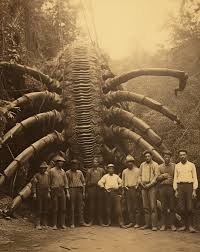The supposed discovery of 6,000-year-old giant skeletal remains in India
The supposed discovery of 6,000-year-old giant skeletal remains in India is a widespread and persistent hoax that has no basis in archaeological reality. This claim has circulated for years on the internet, often accompanied by digitally manipulated photographs that show normal-sized human skeletons next to a very large, fake skeleton. There have been no credible reports from any scientific body, Indian archaeological institution, or government agency to support such a finding.

The myth of giant human skeletons is a form of pseudo-archaeology that plays on ancient folklore and a fascination with the colossal. In the past, the large bones of prehistoric animals, such as elephants or dinosaurs, have been misidentified as human giants. However, the story of “giants in India” is a modern fabrication designed to be sensational, and it has been consistently debunked by experts.

While the story of giant skeletons is a myth, India is a treasure trove of genuine archaeological discoveries that have truly rewritten history. The remains of the Indus Valley Civilization, for example, are a testament to this. Archaeologists have uncovered the ruins of sophisticated cities like Mohenjo-Daro and Harappa, which were home to millions of people over 4,000 years ago. These discoveries, which reveal a highly advanced society with urban planning, advanced plumbing systems, and a complex writing system, are a real-world archaeological marvel that is far more compelling and historically significant than any fictional tale of giants.
